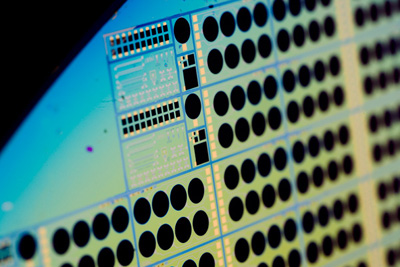Particle detectors

To investigate the smallest bits of matter, some of which last only a fraction of a second before decaying, scientists need something more powerful than a microscope. To study particles, physicists use particle detectors. These devices sense and record information about particles such as their masses, energies, momenta or points of origin.
Different particles and different experiments require different types of particle detectors. The Fermilab detector R&D program develops new particle detection technologies to meet the challenges of particle physics research.
Fermilab routinely collaborates with other laboratories and university groups on a variety of projects. Fermilab has partnered with Lawrence Berkeley National Laboratory to develop silicon sensors for integrated detector systems and novel readout electronics. Fermilab has also worked on the development of 3-D readout electronics and sensors, bubble chambers, calorimetry, data acquisition systems, liquid-argon detectors, time-of-flight detectors, radiation-hard sensors, scintillator and solid xenon.
Fermilab's Silicon Detector Facility, SiDet, contains about 5,000 square feet of cleanroom space dedicated to the fine-scale assembly of detector modules, microbonding and large-scale assembly of complete silicon trackers. For R&D in liquid-argon detectors, Fermilab houses a test stand and purity demonstrator.
In addition, Fermilab houses a high-energy test beam facility, unique in the United States in its capabilities. The facility provides beams of different types of particles at a range of energies, in which scientists can test equipment or detectors.
- Last modified
- 05/30/18
- email Fermilab

